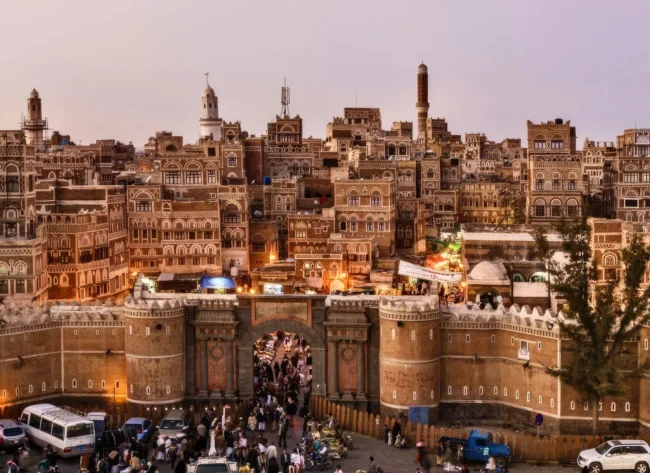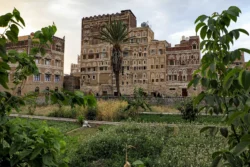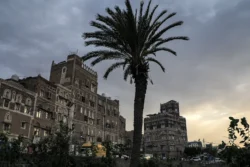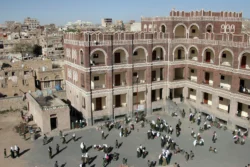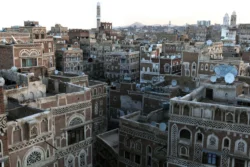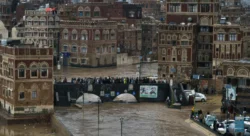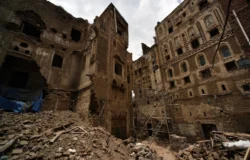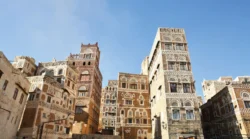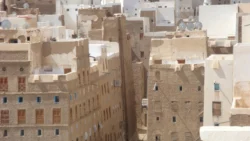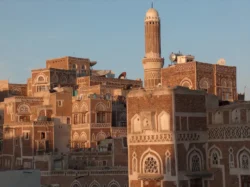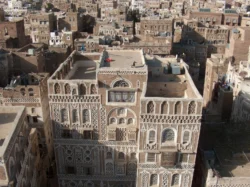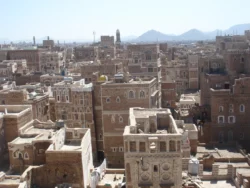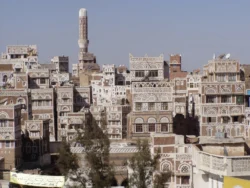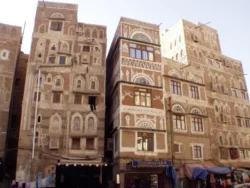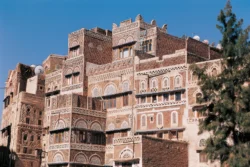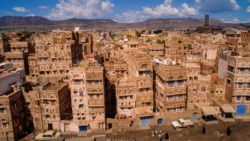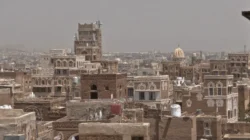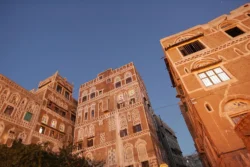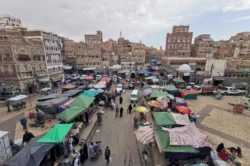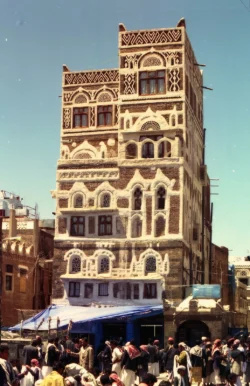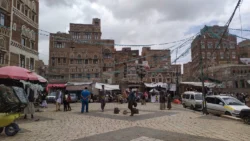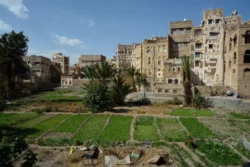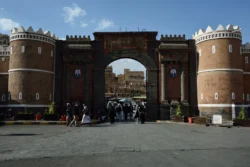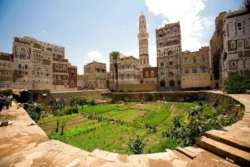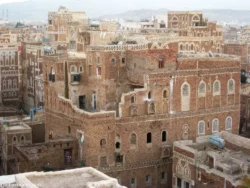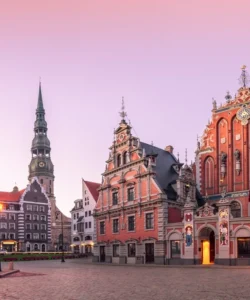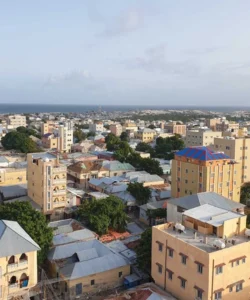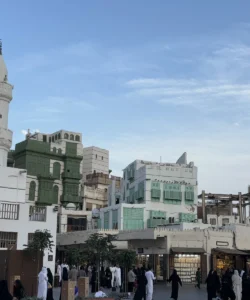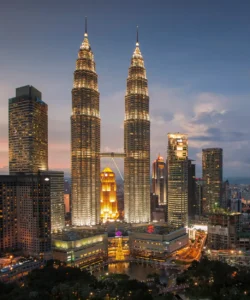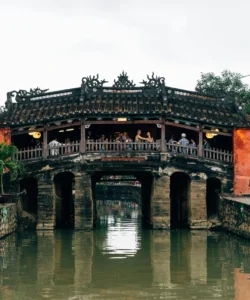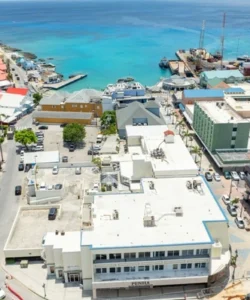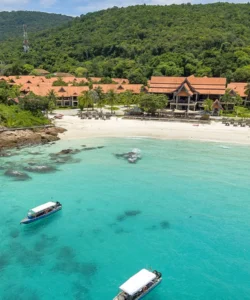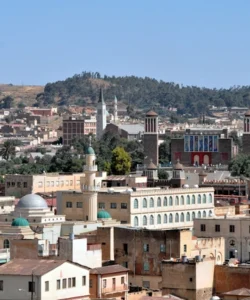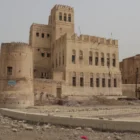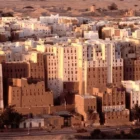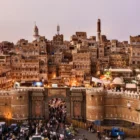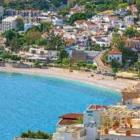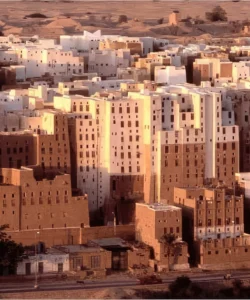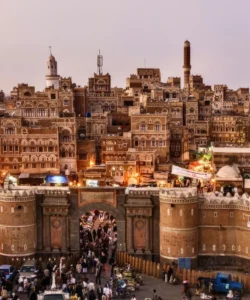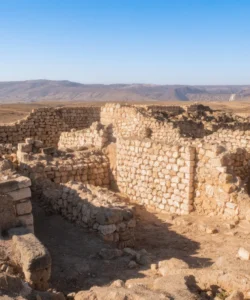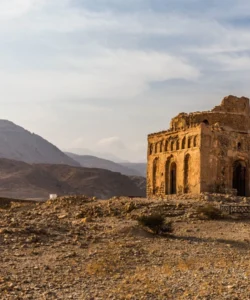The Old City of Sana’a, a UNESCO World Heritage Site, is one of the world’s oldest continuously inhabited cities. Nestled in a mountain valley at an altitude of approximately 2,200m (7,200ft), its unique architectural style and rich history make it a captivating cultural treasure.
Listen to an introduction about Old City of Sana’a
Name and Address
- Name: Old City of Sana’a (Arabic: صنعاء القديمة, Ṣanʿāʾ al-Qadīmah)
- Address: Located in the Amanat Al Asimah Governorate, Yemen, specifically the eastern part of the modern city of Sana’a.
How to Get There
Access to the Old City of Sana’a is typically through Sana’a International Airport (SLL), which has flights from various Middle Eastern countries.
- By Air: Sana’a International Airport is the main gateway.
- By Land: The city is well-connected by road to other regions of Yemen, though mountainous terrain can make journeys long.
- Exploring the Old City: Once in Sana’a, the Old City is best explored on foot. Its narrow, winding streets are designed for pedestrians and camels, creating a labyrinthine experience. The Bab al-Yemen (“Gate of the Yemen”) is an iconic entry point and a lively marketplace.
- Visitor Information: Due to the current political situation in Yemen, it’s essential to check travel advisories and ensure safety before planning a visit. The best time to visit for milder temperatures is generally October to March.
Landscape and Architecture
The Old City of Sana’a is famous for its distinctive and well-preserved architectural style, earning it nicknames like “the Eastern Old Walled City.”
- Mountain Valley Setting: Situated on a high mountain plateau, the city is flanked by Jabal Nuqum to the east and the foothills of Jabal An-Nabi Shu’ayb to the west, contributing to its temperate climate and unique visual appeal.
- Fortified Walls: The Old City is enclosed by ancient clay walls that stand 9-14m (30-46ft) high, a testament to its historical defenses against tribal invasions.
- “Mud-Brick Skyscrapers”: A hallmark of Sana’a’s architecture is its many-storeyed tower-houses, some reaching up to nine stories. These houses are predominantly built from rammed earth (pisé), basalt blocks, and limestone, with upper floors often constructed from fired brick.
- Intricate Decorations: The exterior walls of these tower-houses are strikingly decorated with elaborate friezes, intricately carved frames, and unique stained-glass windows (known as qamariya), creating geometric patterns and a visually stunning urban fabric.
- Organic Urban Plan: The city’s layout is organic and spontaneous, with narrow, winding streets that contribute to its labyrinthine feel. These alleys often lead to open spaces (surha) and traditional gardens (maqshama), which served as social gathering points and provided green spaces.
- Religious and Public Buildings: Within the fortified walls, the Old City boasts over 100 mosques, 14 hammams (public baths), and more than 6,000 houses, many dating back before the 11th century. The Great Mosque of Sana’a (Jāmiʿ al-Kabīr), one of the oldest mosques in the Islamic world, is a central feature.
What Makes It Famous
The Old City of Sana’a is renowned globally for its exceptional historical and architectural significance:
- UNESCO World Heritage Site: It was inscribed as a UNESCO World Heritage Site in 1986, recognizing its outstanding universal value as a unique example of an ancient fortified city that has maintained its urban fabric and traditional architecture over centuries.
- One of the Oldest Continuously Inhabited Cities: With a history spanning over 2,500 years, Sana’a is considered one of the oldest continuously inhabited cities in the world, often linked to legends stating its founding by Shem, the son of Noah.
- Unique Yemeni Architecture: Its distinctive multi-story mud-brick tower houses with their intricate white gypsum and colored glass decorations are unlike any other in the world, showcasing sophisticated traditional Yemeni craftsmanship and engineering.
- Early Islamic Center: In the 7th and 8th centuries, Sana’a became a major center for the propagation of Islam, leaving a rich religious heritage evident in its numerous ancient mosques. The Great Mosque is a prime example.
- Historical Trade Hub: Historically, Sana’a was a vital economic and trade center, positioned at the crossroads of ancient caravan routes that connected the Arabian Peninsula with the Horn of Africa, the Red Sea, and the Indian Ocean. Its Suq al-Milh (Salt Market) was a prominent trading hub.
- Living Heritage: What makes it particularly special is that people continue to live in and use these ancient buildings, making it a living museum that constantly evolves while retaining its historical essence.
Differences from Some Other Attractions
The Old City of Sana’a offers a unique experience compared to other historical sites, even within Oman, due to its scale, architectural style, and ongoing habitation:
- Living City vs. Archaeological Ruins: Unlike the archaeological ruins of the Ancient City of Qalhat, or even partially restored sites, the Old City of Sana’a is a vibrant, living city where thousands of people continue their daily lives within its historic structures. This creates a dynamic interplay between past and present.
- Distinct Architectural Material and Style: While Omani forts like Bahla Fort utilize mud-brick, Sana’a’s architectural style is unique in its verticality, dense urban fabric, and the specific decorative elements (geometric patterns, stained glass) applied to its multi-story tower houses. This sets it apart from the more fortress-like designs seen elsewhere.
- Urban Scale and Density: The Old City of Sana’a represents an entire medieval urban complex with its residential, commercial, and religious functions intact, rather than isolated forts or ruins. Its extraordinary density of multi-story buildings within fortified walls is a rare example of such urban development.
- Historical Continuity: Sana’a’s continuous habitation for over two millennia, coupled with its consistent architectural traditions, offers a profound sense of historical continuity that few other sites can match. Its pre-Islamic roots and significant role in early Islamic history are deeply embedded in its surviving urban fabric.
- Cultural and Social Preservation: The distinct quarter (hara) system, with each centered around a mosque, bathhouse, and garden, exemplifies a traditional social and urban organization that has largely been preserved, offering insight into medieval Arabian community life.
Old City of Sana’a Photos:
